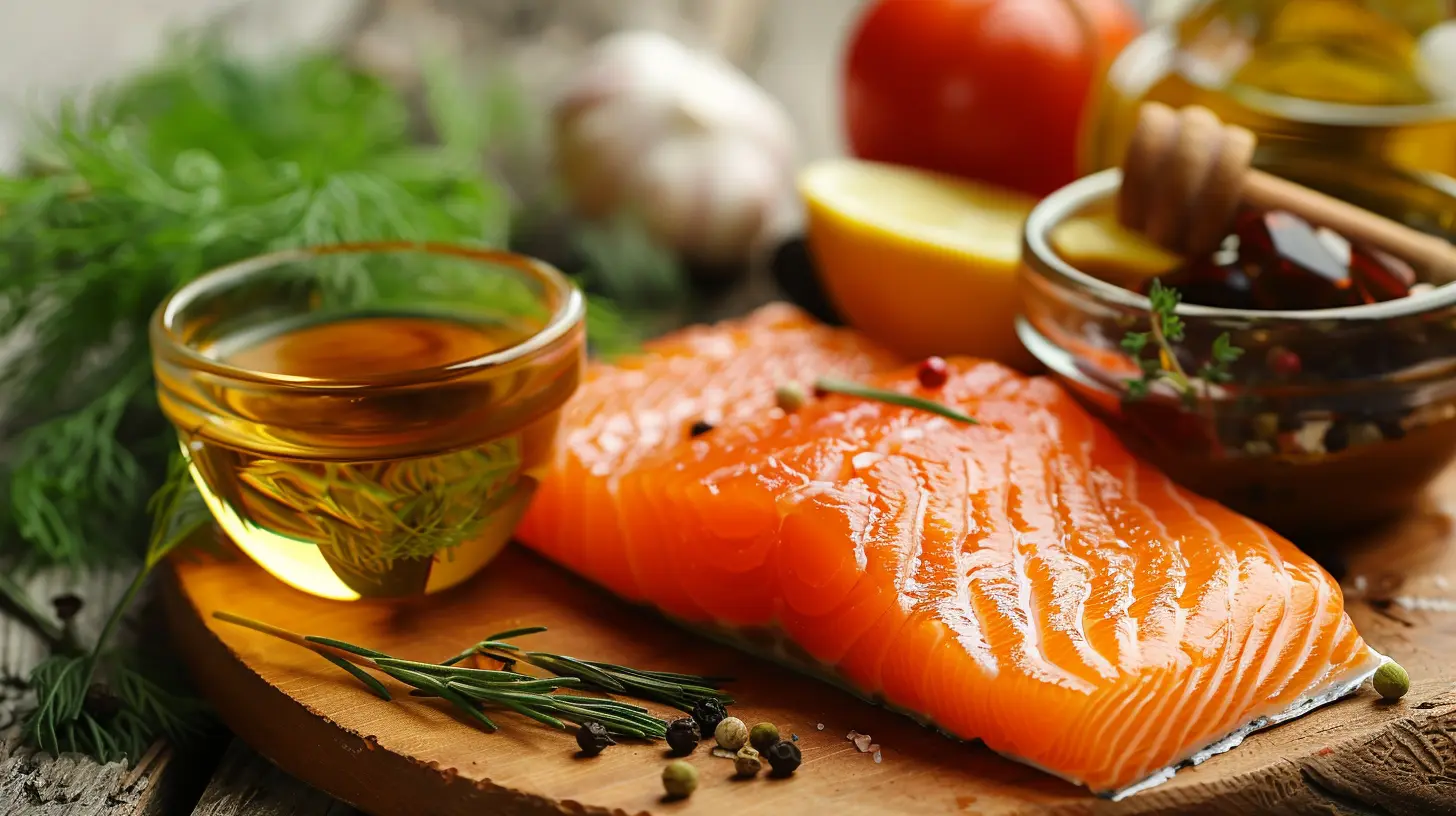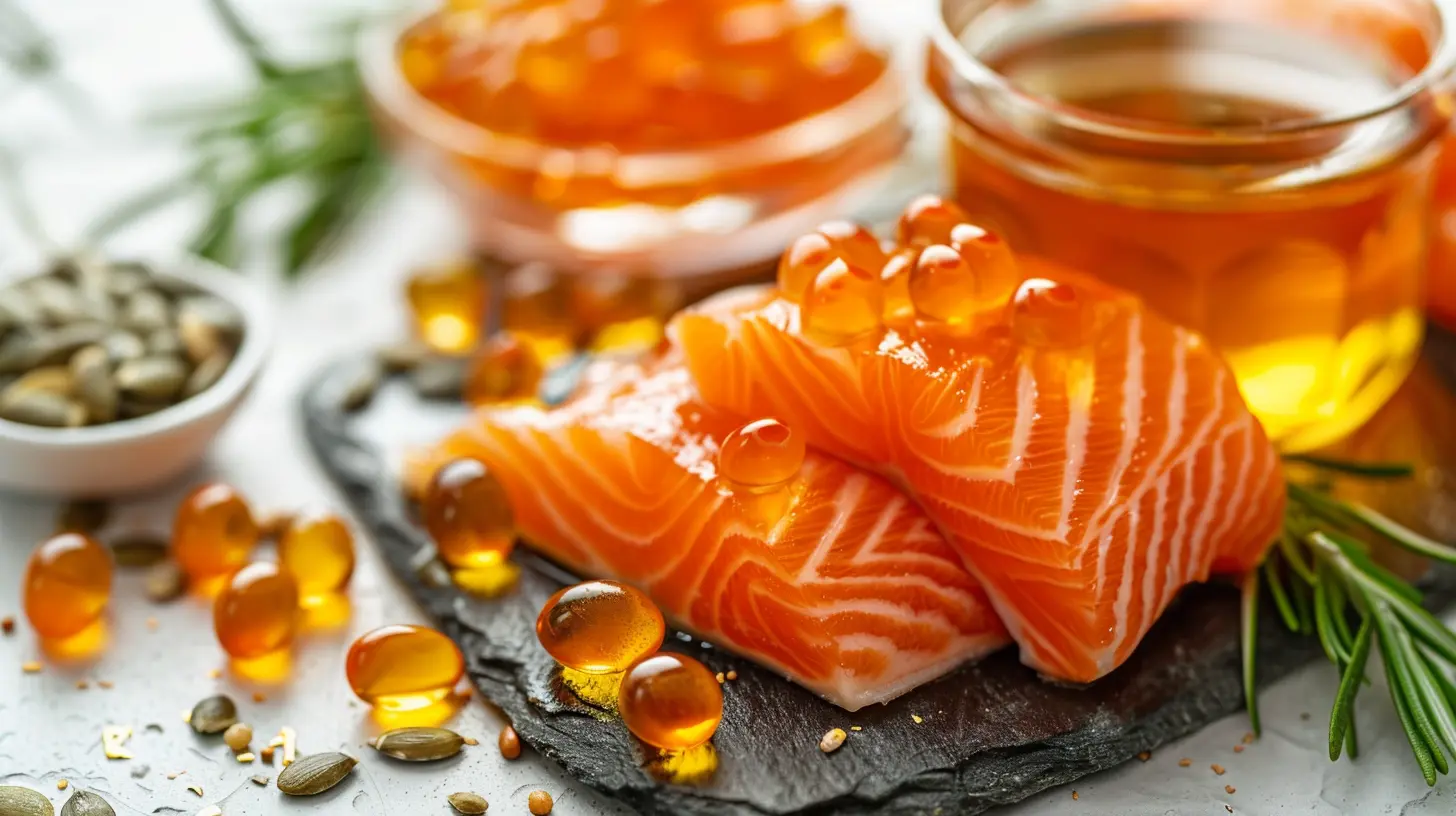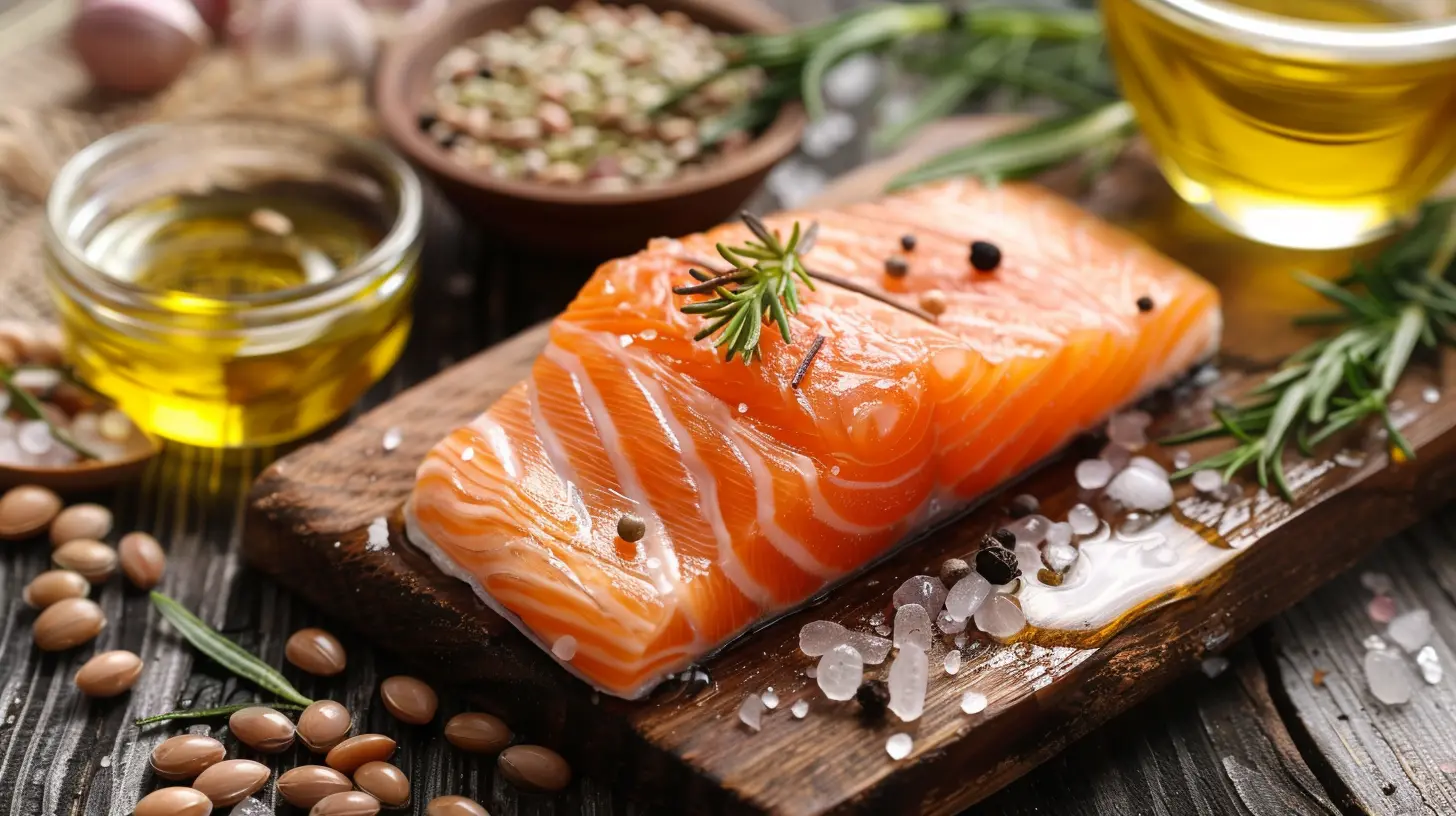The Role of Omega-3s in Anti-Aging and Skin Health
31 May 2025
Aging is inevitable—we all know that. But what if I told you that something as simple as tweaking your diet could help your skin stay youthful, radiant, and resilient? That’s where omega-3 fatty acids come in. These essential fats aren’t just good for your heart and brain; they play a crucial role in maintaining skin health and slowing down signs of aging.
So, if you’re looking for a natural way to keep your skin glowing and youthful, keep reading—because omega-3s might just be the skin-saving secret you’ve been missing!

What Are Omega-3 Fatty Acids?
Before we dive into their anti-aging benefits, let’s break down what omega-3s actually are.Omega-3 fatty acids are a type of polyunsaturated fat that our bodies can’t produce on their own. This means we have to get them from our diet through foods like fatty fish, flaxseeds, walnuts, and certain oils. The three main types of omega-3s are:
- EPA (Eicosapentaenoic Acid) – Found mainly in fish, this is known for its powerful anti-inflammatory effects.
- DHA (Docosahexaenoic Acid) – Also found in fish, DHA plays a major role in maintaining cell membranes, including those in your skin.
- ALA (Alpha-Linolenic Acid) – Found in plant-based foods like flaxseeds and chia seeds, ALA can be converted into EPA and DHA, but not very efficiently.
Now, let’s talk about why these little fatty acids are absolute game-changers when it comes to aging and skin health.

How Omega-3s Combat the Aging Process
Aging isn’t just about wrinkles—it’s a combination of factors like collagen breakdown, chronic inflammation, environmental damage, and reduced skin elasticity. Omega-3s help tackle these problems head-on.1. Keeps Skin Hydrated and Supple
Ever noticed how dry, flaky skin tends to make you look older? That’s because when the skin lacks moisture, it loses its firmness and elasticity. Omega-3s help reinforce the skin’s natural barrier, preventing moisture loss and keeping your skin hydrated from the inside out.DHA, in particular, is a crucial structural component of cell membranes. It ensures that skin cells stay soft, plump, and juicy—in other words, youthful!
2. Fights Inflammation (Aging’s Worst Enemy)
One of the biggest culprits behind premature aging is chronic inflammation. Whether it’s from environmental stressors, poor diet, or underlying health issues, inflammation speeds up the breakdown of collagen and elastin—the proteins that keep skin firm and wrinkle-free.EPA, one of the omega-3s found in fish, has been shown to reduce the body’s inflammatory responses. By calming inflammation, omega-3s help prevent the formation of fine lines, redness, and even conditions like eczema and psoriasis.
3. Boosts Collagen Production
Collagen is the holy grail of youthful skin. It’s what makes skin firm, bouncy, and smooth. As we age, collagen production naturally declines, leading to sagging and wrinkles.Omega-3s help support collagen by protecting the skin’s lipid barrier and reducing oxidative stress (damage caused by free radicals). This means fewer wrinkles and more youthful-looking skin.
4. Protects Against UV Damage
Sun damage is one of the fastest ways to age your skin. UV rays break down collagen and elastin, leading to wrinkles, age spots, and even skin cancer. But guess what? Omega-3s can help shield your skin from harmful UV rays.Studies suggest that EPA reduces the skin’s sensitivity to UV radiation, minimizing sunburn and lowering the risk of premature aging caused by sun exposure. While it’s no substitute for sunscreen, it’s an added layer of protection.
5. Prevents and Reduces Acne
Think acne is just a teenage problem? Think again. Adult acne is a real struggle, and inflammation is often at the root of it. Since omega-3s have powerful anti-inflammatory properties, they can help reduce acne breakouts, redness, and irritation.By balancing oil production and reducing inflammation, omega-3s create an environment where acne-causing bacteria have a harder time thriving. So, if you’re battling breakouts along with wrinkles, adding omega-3s to your diet could be a game-changer.

Best Sources of Omega-3s for Skin Health
Okay, now that we know how incredible omega-3s are for your skin, where can you get them?Fatty Fish (The Best Source!)
- Salmon- Mackerel
- Sardines
- Herring
- Tuna
These fish are loaded with EPA and DHA, making them the most potent sources of omega-3s.
Plant-Based Sources
- Flaxseeds- Chia seeds
- Walnuts
- Hemp seeds
- Algal oil (a great option for vegans)
While plant-based sources primarily contain ALA, your body can still convert some of it into EPA and DHA. However, the conversion rate is low, so you may need to consume more if you’re on a plant-based diet.
Supplements: Are They Worth It?
Not a fan of fish? No worries—omega-3 supplements can be a great alternative. Fish oil, krill oil, and algae-based omega-3 supplements provide concentrated doses of EPA and DHA.When choosing a supplement, look for one that is:
- High in both EPA and DHA
- Sustainably sourced
- Free from contaminants like mercury

How Much Omega-3 Do You Need for Healthy Skin?
The right amount of omega-3s depends on various factors like age, diet, and overall health. However, general recommendations suggest:- 250–500 mg of combined EPA & DHA per day for general health
- Higher doses (up to 2,000 mg/day) may be beneficial for those with inflammatory skin issues like eczema or psoriasis
If you’re getting your omega-3s from food, aim for two servings of fatty fish per week, plus some plant-based sources in your diet.
Final Thoughts: Is Omega-3 the Ultimate Anti-Aging Secret?
While there’s no magic pill for eternal youth, omega-3s come pretty darn close. They hydrate your skin, reduce inflammation, boost collagen, and even protect against sun damage. It’s no wonder they’re considered a skincare superfood!Want glowing, youthful skin? Start incorporating more omega-3-rich foods into your diet. Your skin will thank you for it!
all images in this post were generated using AI tools
Category:
Anti AgingAuthor:

Laura Hudson
Discussion
rate this article
3 comments
Delilah Richardson
Omega-3s aren’t just trendy; they’re essential for youthful skin and overall vitality—embrace them fearlessly!
June 18, 2025 at 4:31 AM

Laura Hudson
Thank you! Indeed, omega-3s play a crucial role in maintaining skin health and vitality. Embracing them can lead to significant long-term benefits.
Pia McLemore
Embrace Omega-3s for youthful skin and vitality!
June 6, 2025 at 2:55 AM

Laura Hudson
Thank you for your comment! Omega-3s indeed play a vital role in promoting youthful skin and overall vitality.
Heath Carey
Omega-3s support skin health and aging gracefully.
June 5, 2025 at 2:34 AM

Laura Hudson
Thank you for your comment! Absolutely, omega-3s play a vital role in maintaining skin health and promoting a youthful appearance.



